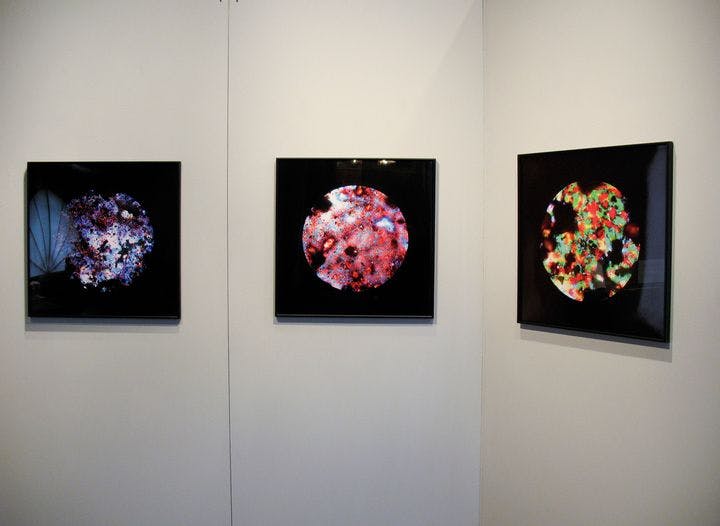Summer 2010
The Art of Life
– The Wilson Quarterly
Welcome to the weird world of bioart.
A dinner party in Paris. Frog on the menu. It sounds pretty straightforward until the catch: In attendance is the frog himself, still alive. The meal being served—coin-sized frog steaks—is tissue cloned from the guest of honor. It’s not the future; it’s a piece of performance art titled Disembodied Cuisine. Welcome to the weird world of bioart.
“The idea of manipulating life in the name of aesthetics is nothing new,” says Emily Voigt, a writer based in New York City, but recently, art in which biological materials are used “has been growing rapidly in popularity and ambition.”Bioart is the catchall label for works of this kind, which range from bacteria that have been genetically engineered to glow in bright colors to a torn leaf repaired with grafted-on human scab cells. Many artists who 10 or 20 years ago were tinkering with silicon and circuits are today playing with cells and DNA.
Many bioartists present their work as a critique of what they see as the recklessness of modern science. Oron Catts, the man behind Disembodied Cuisine, directs SymbioticA, an “artistic laboratory” at the University of Western Australia, where participants can attend “workshops on how to build a home lab for no more than the cost of a laptop” and receive instruction in DNA extraction, genetic engineering, and selective breeding. Catts gives voice to the question raised by bioart: “Should [artists] be allowed to work with life?” But to him, the question is just as relevant for science as it is for art; in his view it’s science, not art, that has produced “the most challenging images of the 20th century.”
Another bioartist Voigt profiles, Adam Zaretsky, believes that even if his experiments with E. coli or other bacteria cause harm or suffering, they are also “introducing important questions into the public consciousness.” He admits, “My art is ethically suspect. . . . My friend sat down with me and said, ‘Well, you know, you say you’re critiquing it and then you’re actually doing it.’ And I was like, ‘You might be kind of right.’”
The first major bioart exhibition was held in 2000 in New York’s Hell’s Kitchen neighborhood. Eduardo Kac, a Brazilian artist credited with naming the genre, had a piece on display in which he translated a verse from the Bible into Morse code, then used the resulting dots and dashes to write DNA code. Which verse? Genesis 1:28, in which God commands that man “have dominion over the fish of the sea, and over the fowl of the air, and over every living thing that moves upon the earth.”
THE SOURCE: “The Art Is Alive” by Emily Voigt, in Isotope, Fall–Winter 2009.
Photo courtesy of Flickr/Amy Youngs
